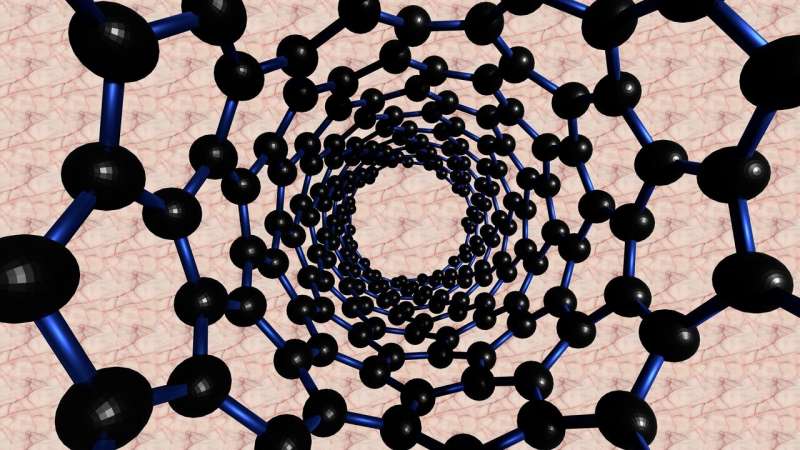
Researchers from the University
of Surrey have revealed a new method that enables common laboratory scanning
electron microscopes to see graphene growing over a microchip surface in real
time.
This discovery, published in ACS Applied Nano Materials, could create a path to control the growth of graphene in production factories and lead to the reliable production of graphene layers.
Dispensing with the use of expensive bespoke systems, the new technique not only produces graphene sheets reliably but also allows to use fast-acting catalysts that reduce growth times from several hours to only a few minutes.
With the use of video imagining, the team from Surrey's Advanced Technology Institute (ATI) have shown graphene growing over an iron catalyst, using a silicon nitride membrane produced within a silicon chip. The membrane is only a few tens of nanometres thin, and heating and cooling can be rapidly controlled by means of modulating an electrical signal that is sent to the iron layer. This acts both as a catalyst and as an electrical resistor to supply the heat.
The imaging uses Fermi-level contrast to visualize doping levels of graphene. This contrast mechanism can be used to identify the point of electrical contact between neighboring graphene flakes. This imaging reveals also that physical contact alone between flakes is not sufficient to form electronic contact, which suggests additional bonding is required before electrons are able to jump from flake to flake.
Professor Ravi Silva, director of ATI and head of the Nano-Electronics Center at the University of Surrey, said, "Graphene, the wonder material of the 21st century, has had much written about its unique and remarkable properties over the last decade. It will be widely used if it can be handled expertly and placed easily in applications. To do this, there need to be routes of observing graphene and precisely placing it on devices. In the research paper, one such route—using a standard electron microscope found in most well-resourced laboratories— is exemplified. We hope this work will encourage many more applications and discoveries of graphene for practical use."
Dr. Jose Anguita, cleanroom manager at ATI at the University of Surrey, said: "Being able to see and control the graphene we are producing in real-time edges us a significant step closer to mass commercialisation and production of graphene for electronic devices."

 Previous page
Previous page Back to top
Back to top







